
The core of grown-ish has always been centered around its ensemble cast as they navigate their experiences in college. Through style, Michelle R. Cole, the nine-time Emmy nominee and lead costume designer for all six seasons of the Freeform sitcom, has shaped a cohesive universe. Alongside Kenya Barris, the series creator and executive producer, what Cole has done is reveal an expansive and fashion-centric realm. To Barris, clothing is of the utmost importance. In that regard, he and Cole connecting years ago was kismet: they are both lovers of the messaging laying underneath Black style. Barris and Cole’s innate sense of style and love for expressive clothing bleeds through grown-ish, creating a dialogue that will be a part of the legacy left behind when the show completes its final season. Throughout 100 episodes, staple moments, political conversations, style sessions, experimental fashion choices, and characters have served as blank canvases.
Before building the crux of the wardrobe for grown-ish, Cole tells me that when she was researching, she went to college campuses set in California, like the University of Southern California and the University of California, Los Angeles, to study what students wore. She swiftly realized that using them as inspiration wouldn’t cut it. A considerable number of students exhibited a laid-back attitude and aesthetic. Since she’d nailed costuming on the iconic show In Living Color as a lead costume designer and worked alongside legends in costume design Ruth Carter (School Daze and more), Francine Jamison-Tanchuk (Boomerang), and Ceci (A Different World), what ensued was fitting.
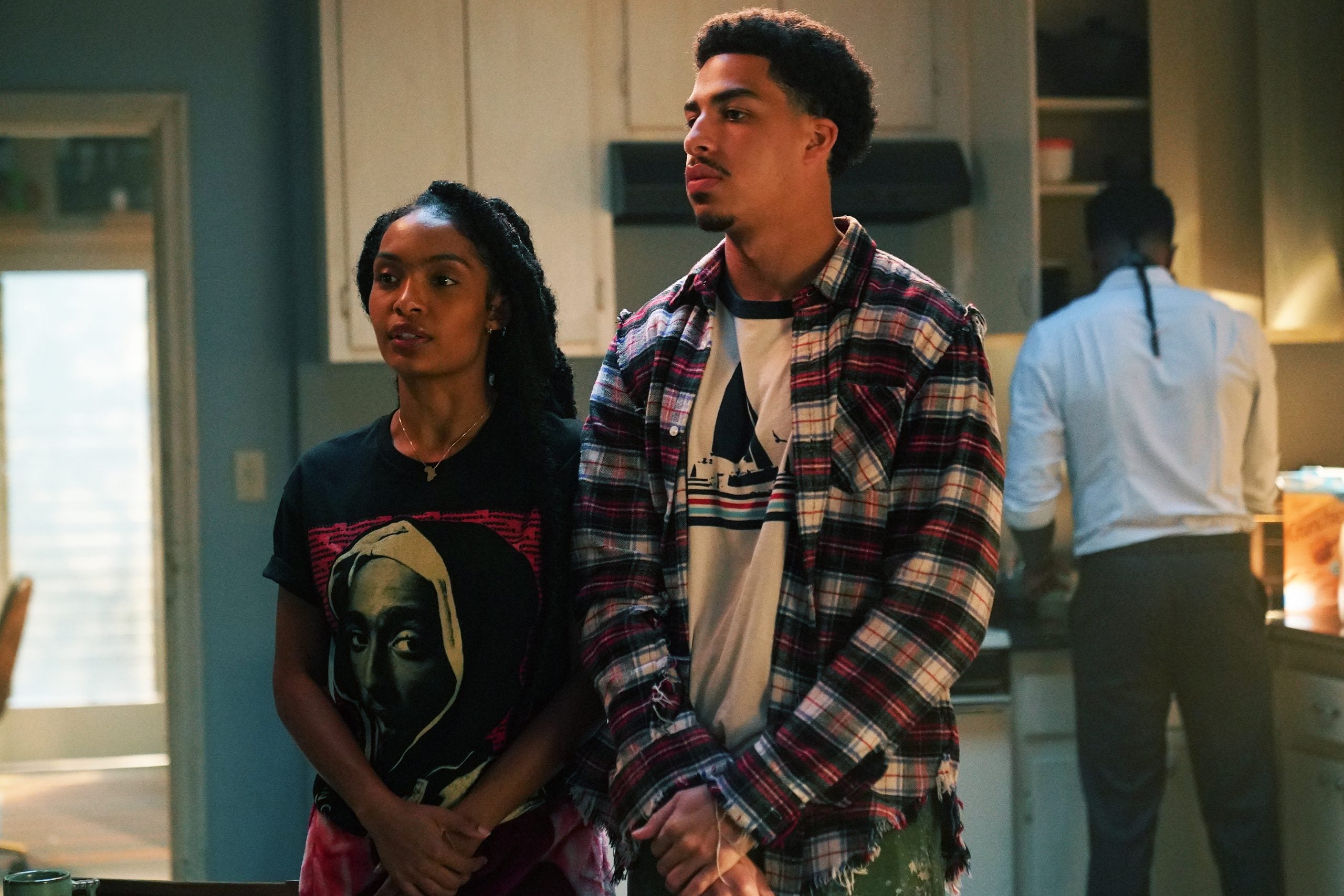
Michelle and her team wanted to showcase kids who enjoyed fashion. So this notion led to high-end designers Loewe, Gucci, Dion Lee, and countless others ranging from Off-White to Rhude were being worn by the core friend group on the show. In its earliest phases, the characters wear pieces from Opening Ceremony, such as Hyein Seo, Sandy Liang and even Sandro. The lead costume designer says she initially sat down with each lead cast member to discuss how they felt about their character. “We wanted also the audience to be able to afford a lot of her clothes,” she said in a Zoom call. A mash-up of styles followed: preppy, vintage-focused, experimental, and even laidback.
Cole felt that the cast’s characteristics came out through their costumes. She explained that she designs and creates distinct looks for the cast of grown-ish directly from her heart. “I’m driven by my spirit. I go on my instincts a lot,” she says.
Instead of putting the characters in logo-heavy looks, she aggressively shopped online and in-store for items that epitomized the main cast, Yara Shahidi, Trevor Jackson, Luka Sabbat, Diggy Simmons, Halle Bailey, and Choe Bailey. The first ensemble also consisted of Jordan Buhat, Emily Arnook, and Francia Raisa. Marcus Scribner (Junior), whom the show is currently centered around is a key style figure (he guest-starred in previous seasons). His crew who is also fashionable consists of Justine Skye, Daniella Taylor, and Tara Raani. Additional faces who make up the current grown-ish cast include Amelie Zilber and Ceyair J Wright.
Yara Shahidi (Zoe) was one of the show’s most significant facets for multiple seasons. Shahidi’s costuming was filled with signifiers of her parent’s money, but throughout the series, she was coping with the growing pains of adulthood. At times, she can be downright ostentatious, but she is arguably the most stylish character on the sitcom.
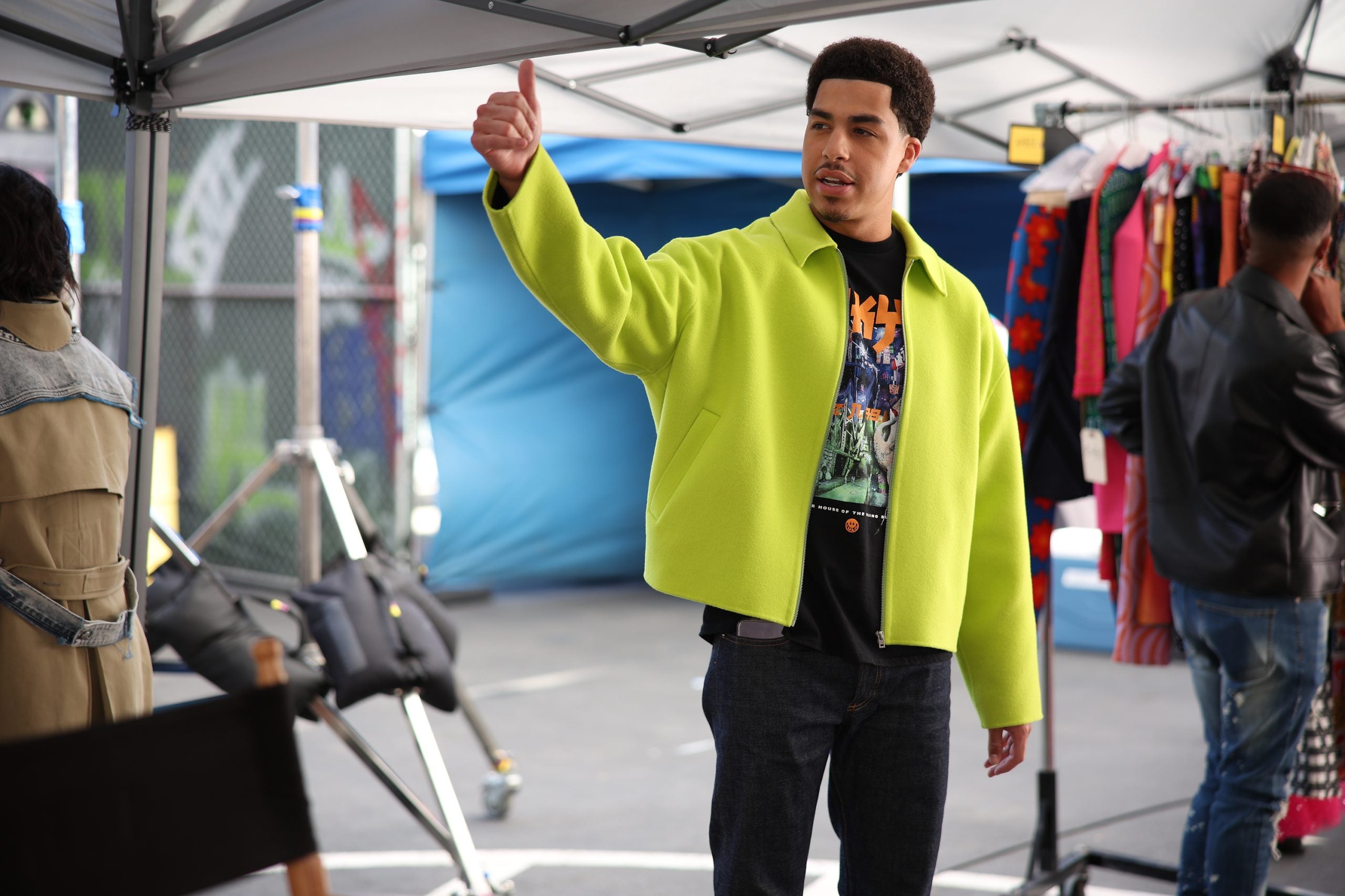
Zoe’s fashion choices represented her constant search for happiness, outward validation, and career path from an obsessive fashion lover to an affluent designer. Over the seasons, she’s gone from wearing Topshop to standout items like a striped teal and yellow JW Anderson dress and a graffiti trench coat by Dsquared. The elevation alludes to her realm of experiences in California and New York. “[To] watch [Yara’s] arc grow from college student to a sophisticated woman owning her business and trying to make it grow, that was pretty significant to me,” said grown-ish assistant costume designer Stanley Hudson. (Hudson is also a former cast member and winner of Project Runway Allstars.)
“It was such a joy to be in Michelle Cole’s dressing room every week, knowing she was going to help me transform into Zoe Johnson,” Shahidi said. “I think in many ways the clothes helped us find the character.” Shahidi also mentions that the intention behind the garments worn by her character, starting with black-ish, lent viewers to pay attention to what she was wearing.
She is grateful that Michelle, Stanley, and the costume design team created costuming to accompany Zoe’s creative path as a designer, explored in multiple seasons. Yara credits Barris for setting the “aesthetic tone” of both black-ish and grown-ish. “From the beginning, he had wanted to create aspirational characters, characters that made quirky fashion choices,” she tells me.
While Zoe’s style arc was enjoyable to watch over the years, so was Luka Sabbat’s. Hudson tells me that with his character, the team incorporated his love for fashion into his looks. “I was able to sort of develop my style and collect things along the way. So Luka is the same way because his parents lived in Europe and he was a model.” This was all a part of the design process for Sabbat’s costumes. A colorful patchwork Martine Rose sweater and a sky blue worker’s shirt by Stussy are a few examples of the self-expression of this character.
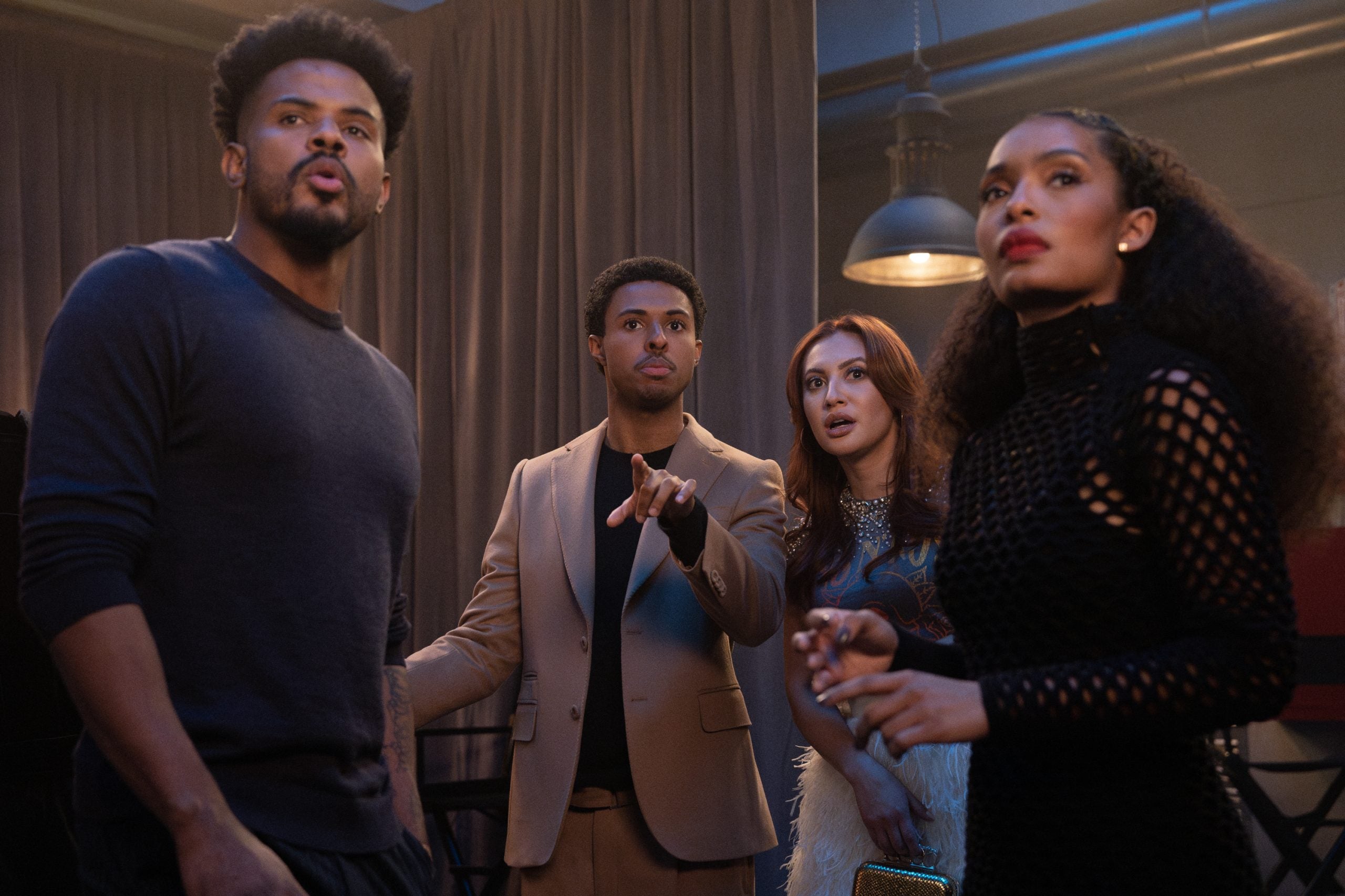
Hudson notes that he and Luka are also collectors and lovers of vintage, so Luka would bring in pieces he collects and the design team would add his actual clothing to his outfits or recreate them. “Him being a designer and having that knowledge of clothing, it just sort of enhanced everything as far as his hair, his jewelry.” The designer adds that he feels they were able to add elements of authenticity such as Luka’s jewelry, which didn’t feel forced.
Junior was admirable to watch blossom too. Through his wardrobe, both Cole, Hudson, and their colleagues were able to exemplify how menswear has changed in the past five years or so. Elevated basics like a floral patchwork shirt by Bode and a lime green Acne Studios jacket were brought to life by Scribner. Casablanca tees and hoodies were also worn casually by his character further speaking to his fascination with high-end designers. There was even a Gucci logo jacket in red and brown which is indicative of Junior’s fixation on men’s clothing that is a bit flashy.
Cole says with Scribner’s Junior they were aiming to showcase his growth since black-ish. They wanted to move away from the goofy image he’d previously been associated with. Hudson notes they tried so many different things to elevate his character–additionally, he mentions they were uninterested in making him look like a victim of fashion.
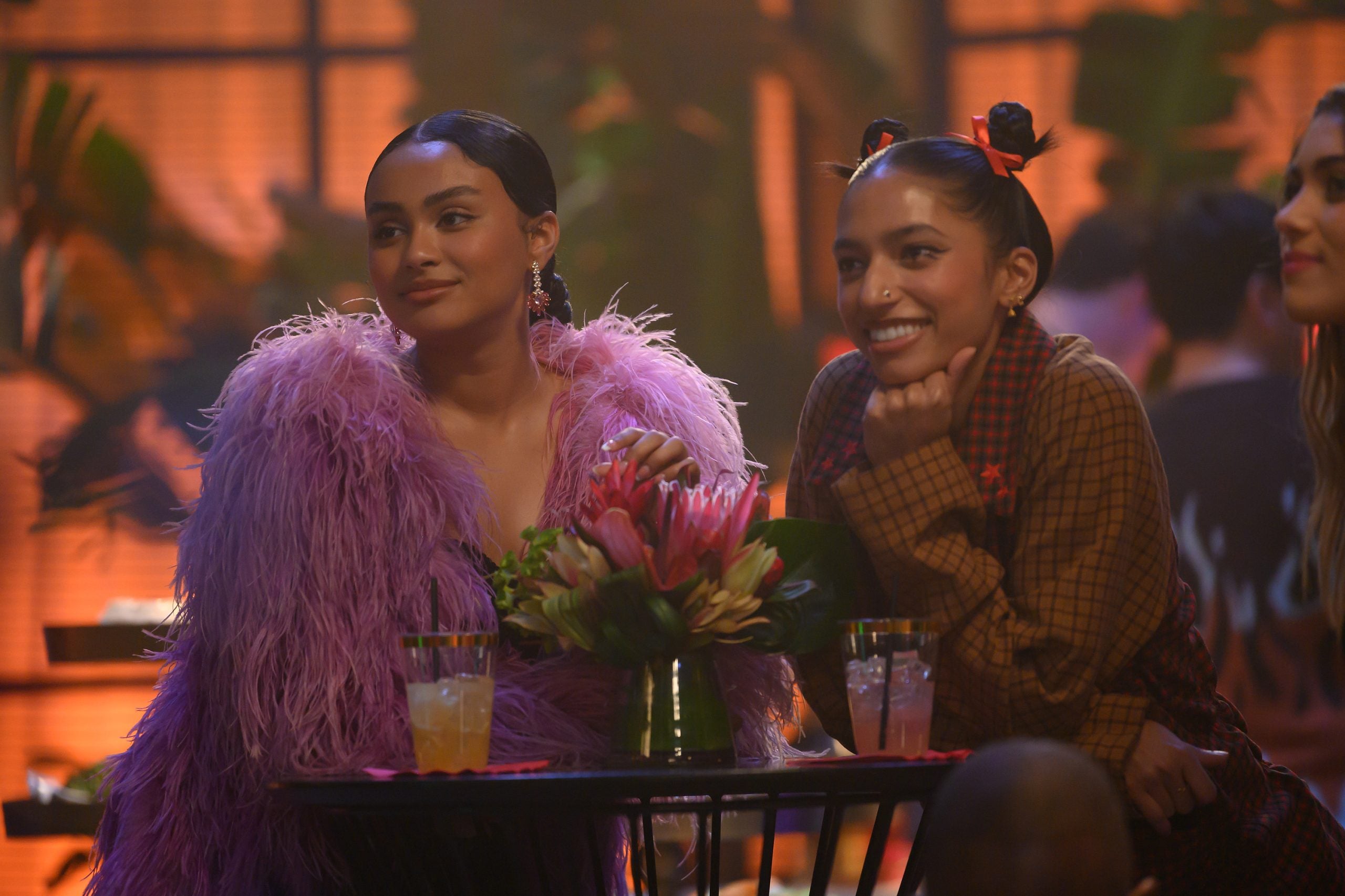
“It was very important to stay true to each story, each person, and carry it through from Kenya’s perspective through Michelle and me being the one to carry the ball across the goal,” Hudson said.
In the 100th episode, which airs tonight, a culmination of sorts is displayed: Zoe has an Anti-Muse fashion show. The presentation alludes to the latest chapter of her character, a designer and a woman stepping into her self-awareness. Since it was coined as a “love letter to Los Angeles,” an explosive moment ensues. Hudson tells me he was able to pull Black vendors to execute the show, but he also made the majority of the looks.
The entire episode was his playground–Michelle gave him free rein to spearhead it. Winnie Harlow’s opening number consisted of a black floral emblazoned bodysuit created with gorgeous white billowing sleeves. It was paired with grungy sky-high boots. Another stunning look was comprised of a black bubble hem dress. The juxtaposition of these outfits was pivotal–it addresses the many styles that Zoe’s character has worn throughout the series. She unabashedly has taken fashion risks. The ramifications of her actions have led her to this presentation, where her friends and family support her.
The closing look worn by Tara Raani (Zaara) consisted of a button-up sleeveless top, fishnet sleeves, and an oversized plaid skirt, which, when combined, felt dynamic and dramatic. This moment is noteworthy because it presents the creativity that has always been allowed to be explored for grown-ish. Hudson says the 100th episode was a labor of love, and he adds that he feels it turned out well.
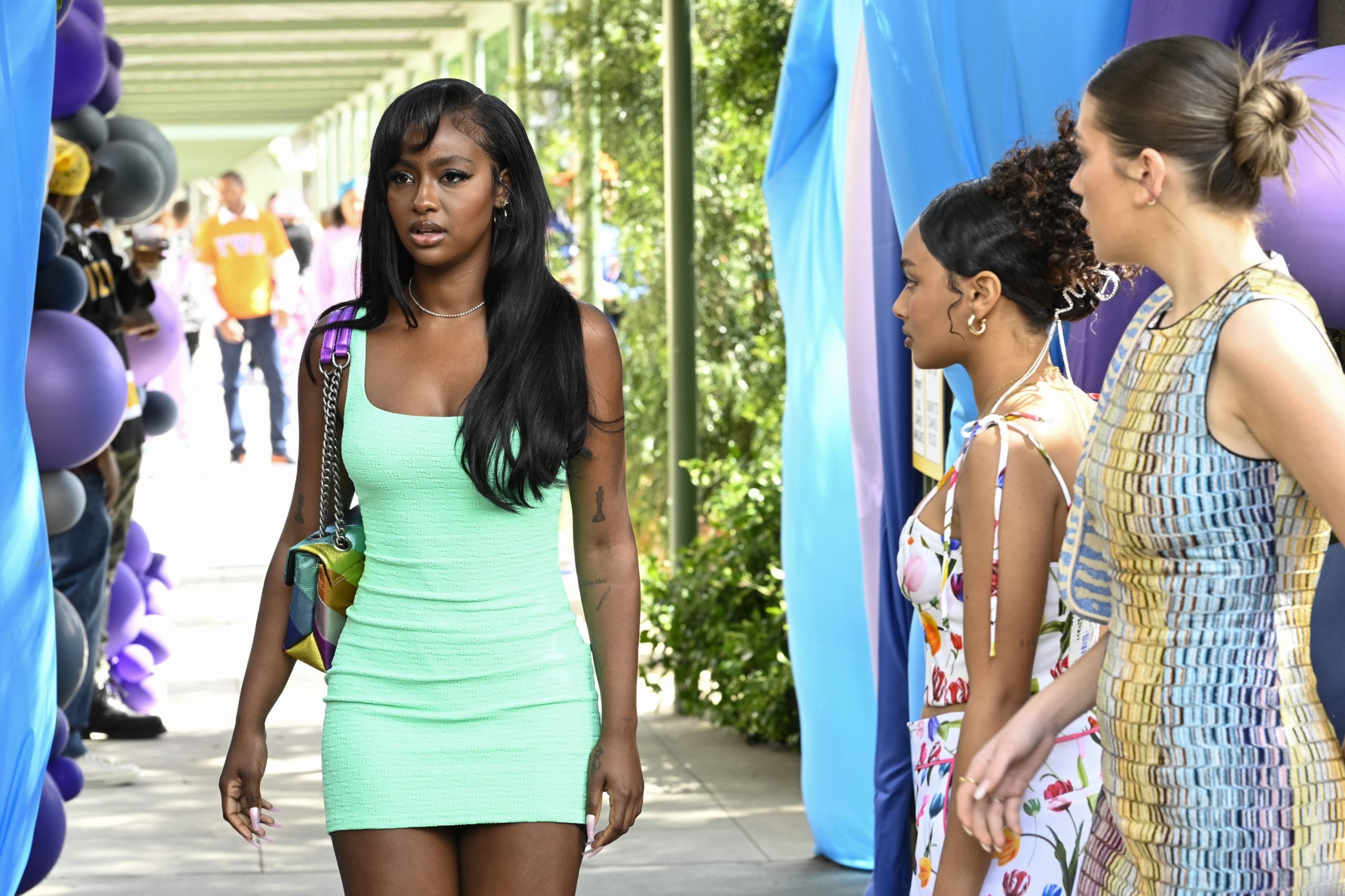
grown-ish is authoritative in the Black television canon since it’s a modern show with a predominantly Black and brown cast. The costume design for it has built a legacy that will indeed be followed. Like other shows with ensemble casts In Living Color, A Different World, and Living Single–this sitcom by Kenya Barris also broke ground.
Before we end our interview, the assistant costume designer, Hudson, tells me that the series gave him power and permission to grow while providing space to tell Black stories through clothing. Amid these notions, it also allowed him to work alongside the legend Michelle R. Cole, who he feels deserves to be highlighted more. “What she’s doing every day and the voices and the people that she puts into the room to sort of weave together our days is not only impressive, but it’s heartfelt, it’s genuine, and we need more people like this in Hollywood, especially for us,” Hudson adds.





